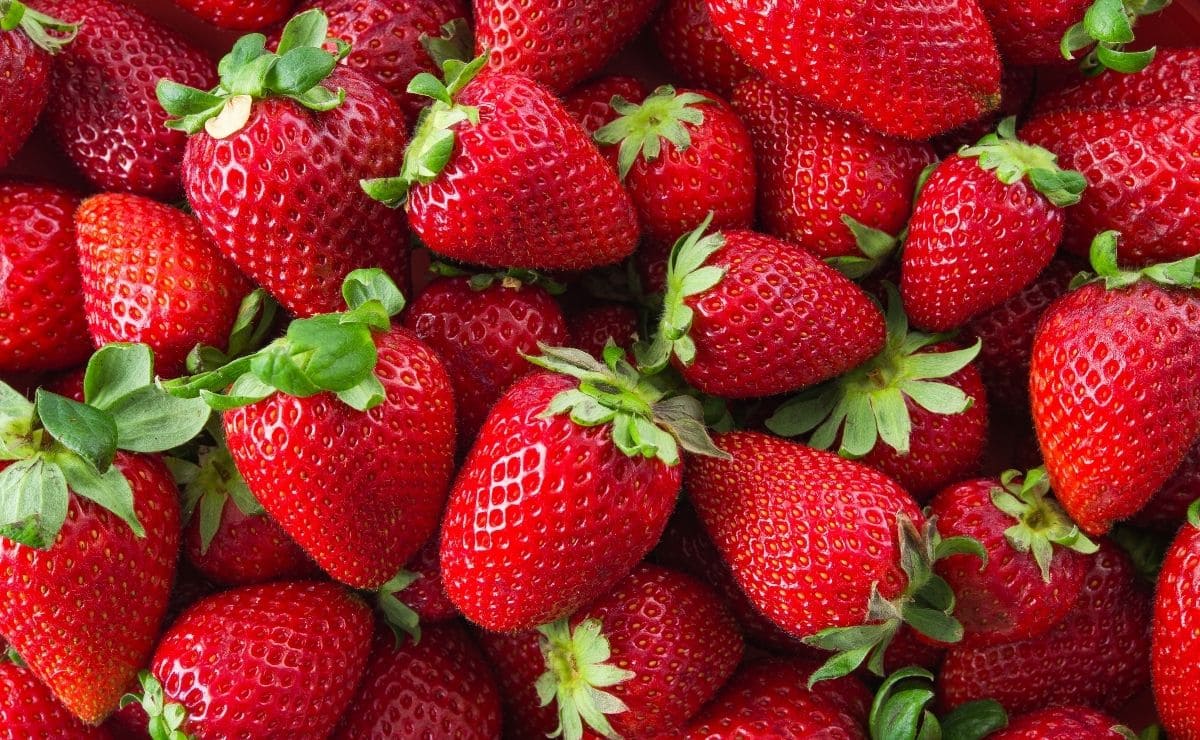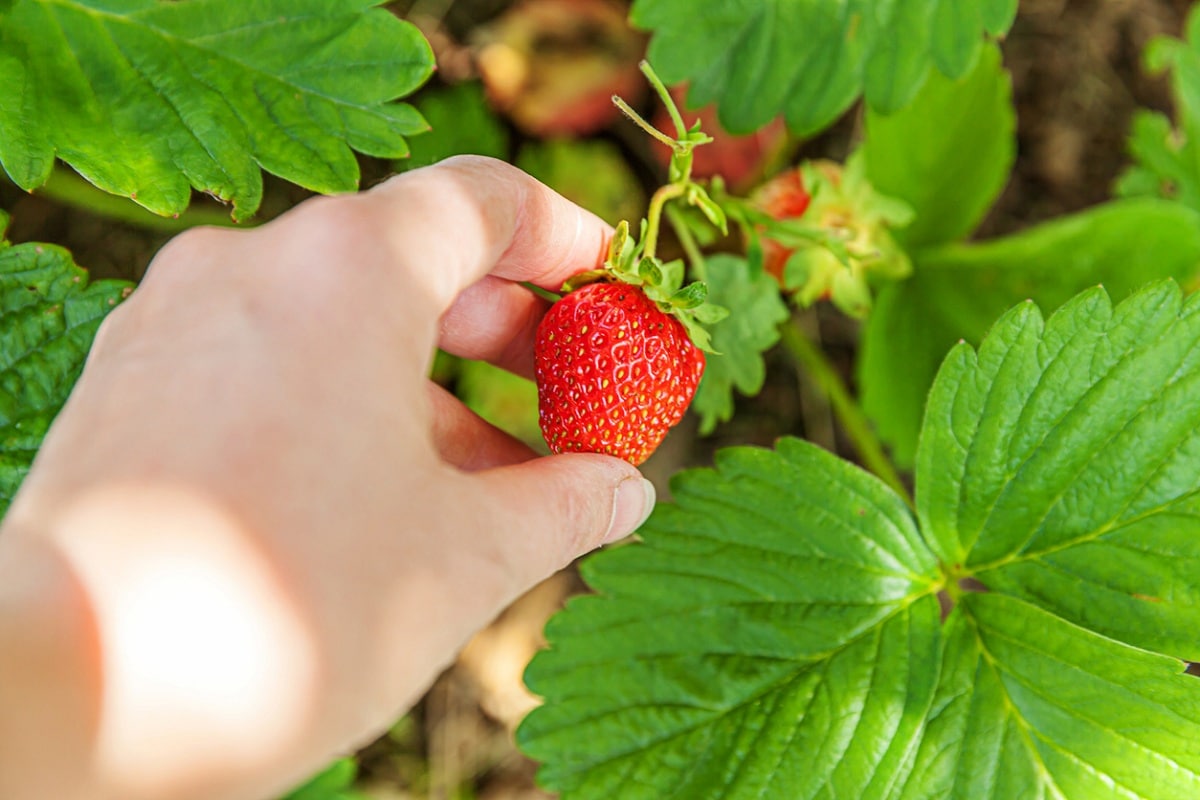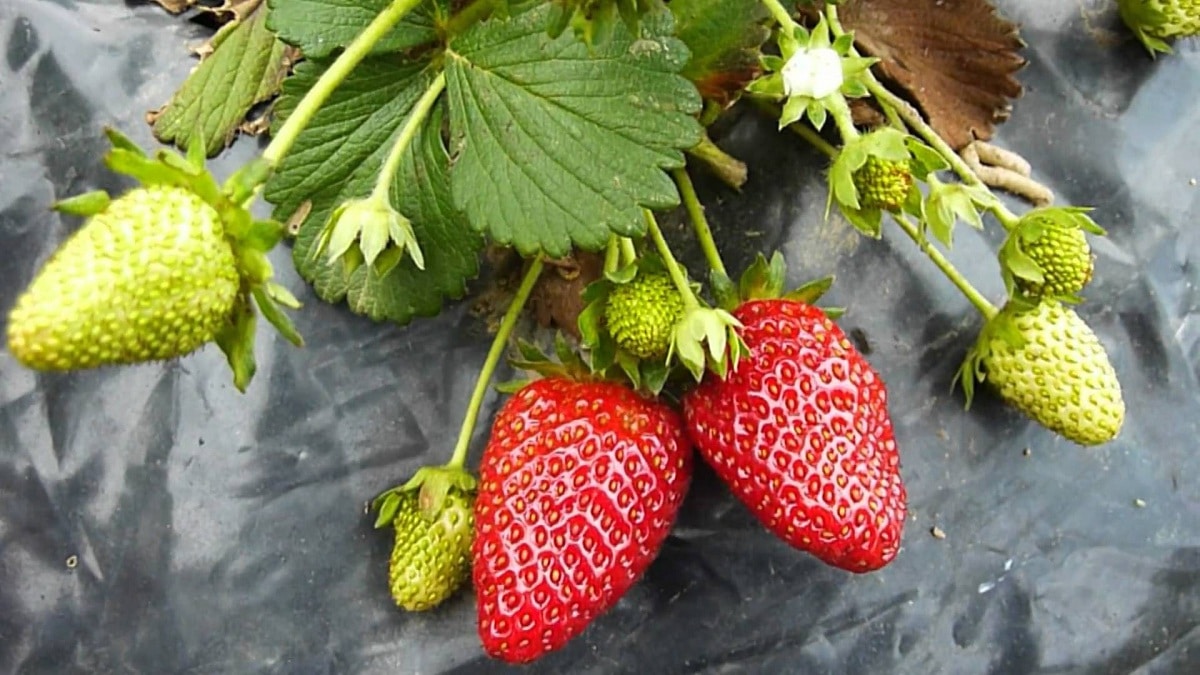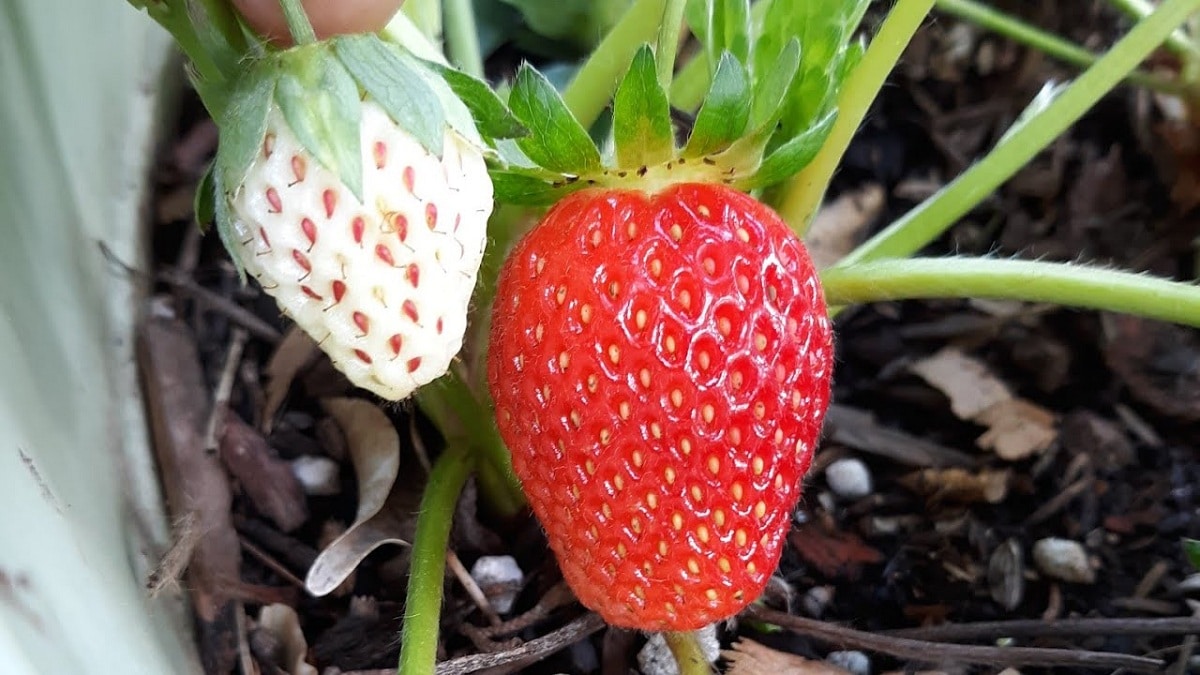
Probably if you have a home garden you do not know well what you are going to plant. Strawberries are always a good option since it is a small crop, it is not too complete to sow nor does it have very demanding care. There are some tips to keep in mind to learn how to grow strawberries. You should know that the best prey can be eaten are those grown at home since those sold in supermarkets are usually collected and harvested a little earlier so that they can reach the consumer in good condition. This avoids that the sugar can be generated in its entirety and there are not so sweet strawberries.
Therefore, in this article we are going to tell you how to grow strawberries in your home garden and what you should keep in mind.
How to grow strawberries and their best varieties

There are different varieties of strawberries that can be grown in our home, but there are some more interesting than others. Each of them has different flowering times. Some of them are based all year round giving flowers and others only bloom once a year. As almost all strawberries have a similar care, you can choose the one that prevents the best. It doesn't have to be a specific variety.
Some of the most common are wild strawberries. They are very small but they make up for it with a sweet and intense flavor. In addition, they are quite productive and, if you do not have too much light, they are the best for it. They are practically impossible to find in supermarkets since they do not keep at all well. You have to eat them the same day you take them. The Strawberry Charlotte is another variety that is also difficult to find in supermarkets, it will have an incredible flavor. It is medium in size and produces quite a few strawberries from spring to autumn.
Lastly, the Mariguette strawberry is quite fleshy and large in size. It can be kept in the fridge for a few days. The home grown flavor has nothing to do with those that go to the supermarket. And it is that when you are going to sow them at home you eat them just when they are mature to eat. The advantage of this variety is that it is re-flowering. This means that it will give you several harvests.
Where to plant

The first thing that we must take into account is the light and climate that are needed so that the strawberries can develop correctly. Strawberries are fruits that like the sun. Therefore, it is advisable to take a sunny place where more or less can receive about 7 hours of direct sunlight. However, although it prefers the sun, it also tolerates shade very well. Keep in mind that if the strawberries are in the shade, their production will be much lower.
On the other hand, strawberries resist a wide range of temperatures, so you don't have to take too much into account. There are some varieties that can tolerate even snow. However, its optimal temperature in which it develops new flowers, stems and fruits It is between 10-13 degrees at night and between 18-22 during the day. It may be interesting to place some type of barrier on the sides that can prevent the wind. In this way, it is easier to keep the temperature stable at all times.
As we have mentioned before, they can resist more or less strong frosts depending on the growth phase they are in. Let's see what are the phases and the frosts that it can withstand:
- Up to -12ºC during its vegetative phase. This means that its stems and leaves will survive in winter where the temperature is not below -12 ºC, its flowers and fruits will die, but they will bloom again in spring.
- 0 ºC during the flowering period. If you live in an area where there may be sudden frosts in late winter and early spring, you may run into problems, as temperatures below 0ºC will kill flowers and fruit. To avoid this, place the greenhouse during February and March.
Aspects of how to grow strawberries

Although some people who want to learn how to plant strawberries, it is not recommended. They usually take a long time to germinate and it is quite a complicated planting. What's more, due to cross pollination the resulting plant is more likely to be different than what you expected. They tend to produce smaller and more acidic fruits. Even so, if you want to sow strawberries, you must take into account some aspects such as that the sowing is done in a seedbed in times where the temperatures are somewhat warm and cold since the seeds need a little colder to germinate. You can increase the chances of successful germination by putting the seeds in the freezer for a couple of weeks.
The important thing is to learn when to transplant strawberries. The best time to transplant depends on each variety that we have chosen. Nevertheless, the most normal is that this time goes from the beginning of spring to autumn. It is preferable to count all the flowers and stolons so that they can strengthen the plants at the time of transplantation. Let's see step by step how to transplant the plants:
- When transplanting, it is important to take into account the depth of implantation of the crown, if it is buried too deep, it is likely to rot.
- Do not transplant strawberries to places where eggplants, peppers or tomatoes have previously been placed, because they are very sensitive to these pests.
- To promote drainage, you can add a small amount of agricultural sand or vermiculite to the substrate where you want to transplant them.
- The recommended distance between strawberry plants is about 30 cm, but the truth is that in a small space it can be reduced to 20 cm, which is not a problem.
The ideal substrate is one with good drainage and abundant organic matter. An example of this would be the following:
- 50% coconut fiber
- 40% worm castings
- 10% perlite
Lastly, strawberries are very easy to propagate and you don't need to buy new plants. They can reproduce both by stolons and by division of the plants.
I hope that with this information you can learn more about how to grow strawberries.